4. Type II - Intraaural - www.hifilounge.eu
Main menu:
- Home
- General
-
Speakers
- Basics
- Speakers
- Headphones
- Subwoofer
- Elektronics
- Surround
- Photography
- Infos
4. Type II - Intraaural
Speakers > Headphones
In contrast to circumaural and supraaural headphones (also shell headphones) there is also another variant of headphones - the intraaural headphones which play directly in the auditory canal. These headphones are mostly used for mobile applications and have become increasingly popular due to mobile MP3 players.
Intra-aural headphones - InEars vs EarBuds
Some years ago EarBuds were the standard among mobile headphones. EarBuds are usually very loose and have no defined position in the ear canal. The EarBud does not seal the ear canal, so there is no pressure chamber effect.
If the EarBud is pressed deeper into the ear canal, the working conditions are more similar to the pressure chamber effect and the bass becomes more defined. If the listener shakes loose, the bass has almost completely disappeared. In order to be able to listen to some music under all circumstances, the listeners were usually set very loudly. This was not only bad for the drumheads and the battery in mobile MP3 players, but also quickly disturbed other participants in public transport.
EarBuds sit loosely in the ear canal and therefore do not provide sound insulation. In noisy environments, the EarBuds are therefore set to very high volumes so that you can continue listening to music. This can also put a strain on your hearing in the long run.
Personally, I consider EarBuds to be a completely wrong technical development.
The solution was InEars. This receiver has a soft silicone attachment which is similar to an ear plug pushed into the front part of the auditory canal. This plug seals the auditory canal and the tiny loudspeaker chassis of the InEars immediately works on an encapsulated volume (pressure chamber effect, similar to a bicycle pump).
InEars have found widespread use quite late. The breakthrough was the EP630 which for the first time was a cheap and good solution. The model is still available today.
Good InEars offer a bass that is comparable to good headphones. With some models this can even become too much of a good thing at very low bass: Subbasses can press unpleasantly. Such receivers are usually advertised by the manufacturers as particularly bass accentuated. If you want to enjoy music with a good sense of hearing until you retire, you may want to avoid such receivers.
Good InEars use the defined seat in the ear for a more neutral reproduction. The bass is present and natural, but not painful and damaging to hearing. I can only recommend good InEars.
InEar Essays
The eargeometry varies from person to person, accordingly the manufacturers enclose different attachments with the InEars. In the consumer area, these are usually small silicone attachments mounted on the RHA shown below - these are then available in an S, M and XL version. The silicone tips are very soft and usually fit well into most ear canals.
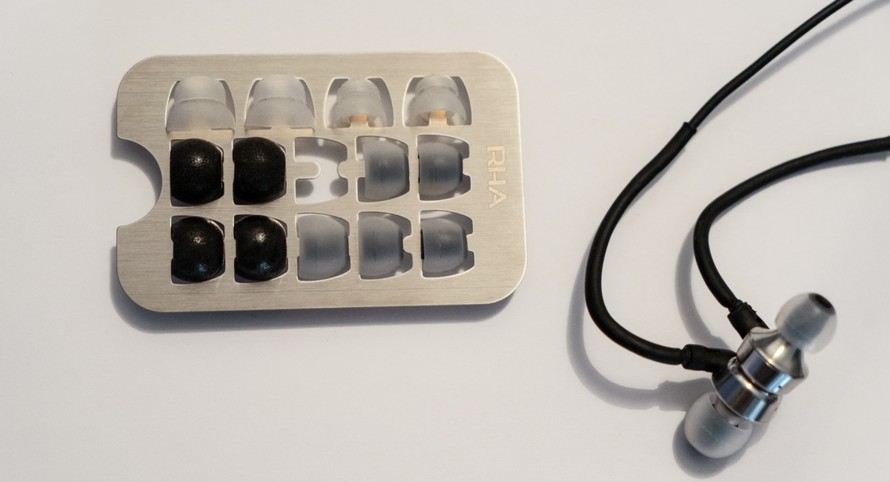
Figure 1: InEar headphones from RHA with different attachments
The picture above shows a frame from the attachment of a high quality InEar from RHA. In addition to the standard attachments there are also "fir trees" (above in the frame) and foam current attachments (black).
Some manufacturers of high-priced InEars also offer custom-made attachments, for which an impression of the ear is made on site and an individual attachment is produced. This usually costs several hundred euros. The outside noise shielding with custom-made products can amount to (very good) 20db.
The custom-made adapters can also be manufactured separately as hearing protection. The application purpose lies here e.g. with persons who often work with loud machines. With the adapters some cases (exchangeable) filters are also provided in the attachments which isolate different frequencies differently strongly and e.g. let voices through. Corresponding possibilities have already been offered for custom-made InEars.
The silicone attachments are by the way easy to clean and can often be bought in case of loss.
Classic InEars vs. InEar Monitor
Gu There are two types of InEars - classic InEars and InEar Monitors (IEM). The standard mass-market InEar is plugged directly into the ears, the cables run directly downwards like classic EarBuds. If the wearer moves and the cable rubs over the clothing, the tensile load is transferred directly to the earpiece (= mechanical body sound input in the cable). This process is clearly audible (crackling, loops). In extreme cases, the listener can be pulled out of the ear and fall out.
Many manufacturers adapt the InEars with small strain reliefs to the cables, also often smooth cables are used to reduce the body sound input through the clothing. When the wearer moves at walking speed, the body sound input is usually sufficiently low - music enjoyment is possible without any problems. Particularly in modern music styles with constant bass, the background noises are overtuned.
With classical music, quiet phases often occur, where the effect can be noticeably disturbing. The same is true for joggers: the introduction of structure-borne noise becomes massively disturbing, for sports applications inEars are only conditionally recommendable.
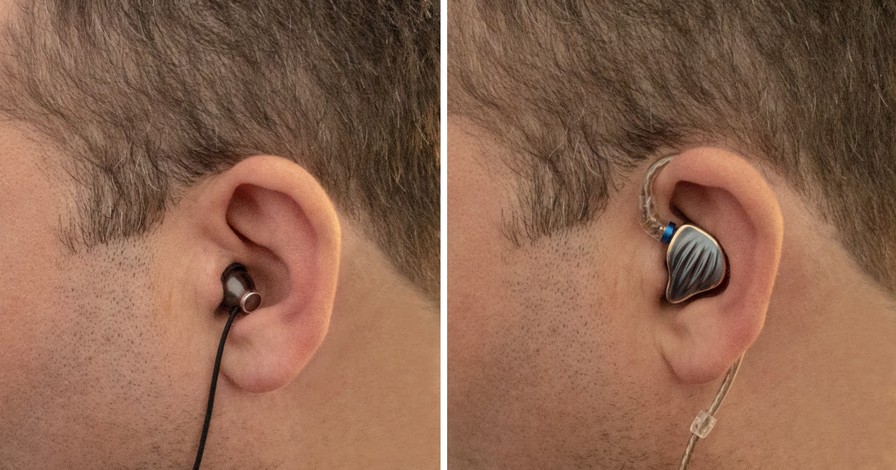
Figure 2: Classic Philips InEar (left) and FiiIO InEar Monitor (right)
The InEar Monitor (IEM) is widely used in higher price ranges. Here the cable is led over the ears according to the picture above. Any structure-borne sound entering the cable is picked up by the ear and does not go to the InEar - the noise level drops considerably.
The cables for the left and right IEM must be connected under the chin. This prevents the cable from slipping over the ears. InEars for this carry form have corresponding loops / clips integrated in the cables. The IEMs are therefore worn a little closer to the head on the cable side and are therefore more present in the wearing comfort.
At this point a warning: Classical InEars and IEMs have different cable routing structures. The cable piece which runs behind the ear in IEMs is often stiffened, at the same time the cables left/right have to be connected under the chin as described above. Laying the cable of a normal InEar behind the ear does not correspond to the wearing sensation of a "native" IEM.
I personally prefer the design of the IEM to classic InEars. In theory, I would recommend prospective buyers to try both variants. For hygienic reasons, however, the trial wearing of InEars is understandably undesirable at many dealers, so the trial wearing / hearing of InEars is difficult in practice.
The term InEar Monitor describes the cable routing for many manufacturers and the use of words on this page - in many forums, however, the use of words is not clearly or even differently defined.
InEar monitors often also refer to earphones for concert performances of musicians. Usually the musician wears a radio receiver in which his voice (or his instrument) is integrated into the overall musical panorama of the entire band. With this he can better estimate how loud or quiet he has to sing (or play). In addition, the volume on stage is usually very high, so the InEars usually have custom-made listening inserts which ensure a particularly strong noise isolation.
Some sources call inEar monitors generally high-quality and very good sounding inEars. The wording here refers to neutrality and proximity to studio monitors. Depending on the sound engineer's preference, these inEars can be used to mix songs, but classical shell headphones are more common for this purpose. Audiophiles are also among those interested.
HighEnd InEar Monitoring
Due to the expensive and very small rental apartments in international metropolitan cities, a high interest in compact and mobile sound solutions has developed in recent years to replace traditional stereo systems. In this context, the demand for very high-quality InEars has increased significantly. Some IEMs are offered for four-digit Euro prices.
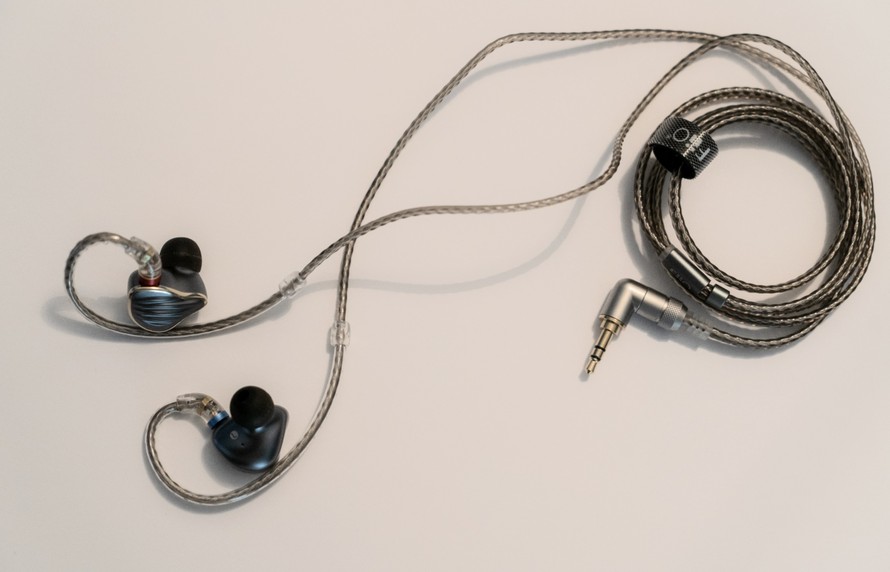
Figure 3: Four-way IEM from FiiO
The differences from high-priced InEars to cheaper "bar stock" can be as follows:
- The sound is often better.
- More different eartips for the ear canals are included.
- The adapters are often made to measure for very expensive models, which has a positive effect on the sound insulation.
- Many HighEnd IEMs are multi-way loudspeakers. For example, the FiiO InEar monitor shown above has four drivers.
- The cables are often exchangeable, the receivers can be used even after a cable break. The connections are increasingly standardized, the MMCX is a widespread standard.
- There are exotic chassis designs like tiny magnetostatic InEar drivers, balanced armatures, etc.
- Some IEM have active noise cancelling.
An additional note on multi-way IEMs: Many manufacturers offer technical marvels with an extremely complex and difficult integration of the drivers in the smallest space for a corresponding amount of money. In individual cases, there may also be very nice and good sounding solutions.
With high-end stereo loudspeakers, multi-way concepts are absolutely necessary in order to enable (very important in terms of sound quality) uniform dispersion characteristics. This aspect does not apply to IEMs because headphones play independently of the room acoustics. Good broadband drivers can therefore play very convincingly with headphones.
Intraaural vs. Circumaural
There are very good InEars that sound impressive.
However, IEMs are at a significant disadvantage compared to circumaural headphones.
A circumaural design that encloses the ears makes the loudspeaker chassis of the listener sound homogeneously to the entire ear. An individual and complex pattern of sound reflections, diffractions and refractions takes place within the ear muscles. The brain of the listener has known these ear-specific distortions since birth and uses this "outer ear transfer function" to locate sounds better. For a natural sound experience, large-area drivers, e.g. electrostatic headphones, with even sound distribution throughout the entire ear can have a natural effect. Many high-end enclosing earphones have several centimetres. Often the chassis are even angled so that the sound signature is emulated more strongly than "coming from the front". This attenuates the inhead localization of the music.
InEars are in the ear canal and thus inevitably ignore the ear. Depending on ear geometry and InEar, the result may sound (randomly) very good. But it does not have to.
If you are looking for a portable headphone for your smartphone: There are also several "fullsize" cans around like the Beyerdynamic Astell&Kern T5p below. This high efficiency and low impedance phones can run as good on a smartphone jack than a in ear phone. Of course they're more conspicuous in the subway.
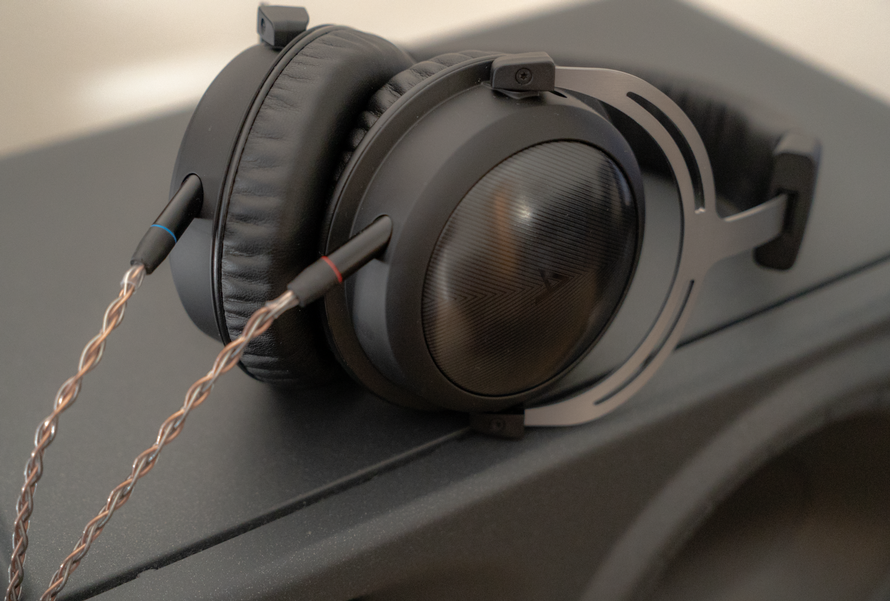
Figure 4: Portable high end haedphone T5p from Beyerdynamic / Astell Kern
Paying attention to frequency response measurements is not very effective with InEars. At most sound characteristics of already known InEars can be compared with unknown InEars. But these comparisons should also be made with caution. Based on the individual HRTF: hearing with InEars is mostly a very subjective experience.
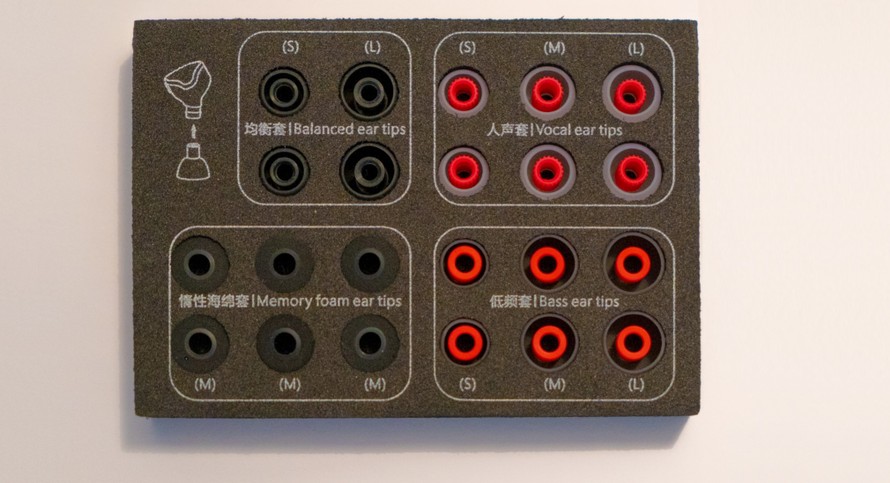
Figure 5: Equalizer function by different EarTips with a Fiio InEar
There are different approaches to tackling the problem. RHA offers several screw-in filters for some InEar top models which influence the frequency response. Fiio provides earpieces with different sound characteristics. I don't know of any other equalizer-solutions from other manufacturers. The use of equalizers can therefore make sense - Just use neutral speakers as a reference if you need a natural sound for mixing.
It's a pity that listening to InEars is so difficult. For hygienic reasons, however, most dealers are not very helpful.
The end of the 3.5mm jack for smartphones
For a long time, MP3 players, laptops and smartphones had 3.5mm jacks as standard. In the meantime, some manufacturers, such as Apple, no longer offer devices with jack outputs for the IPhone product series. Other manufacturers such as Samsung and Huawei remain (so far) loyal to the jack.
High-quality headphones are usually only offered with jack connectors. Audiophiles should therefore insist on a jack when purchasing a new smartphone. USB-C to 3,6mm jack connecters are anoying in daily use.
Perhaps we will see more USB-C headphones in the future. This output enables the output of audio signals and offers additional supply voltage for extended functionalities such as active noise suppression. The theoretical possibilities are extremely interesting, but in practice the market offers hardly any choice.
Wireless headphones
Another option is to switch to wireless headsets.
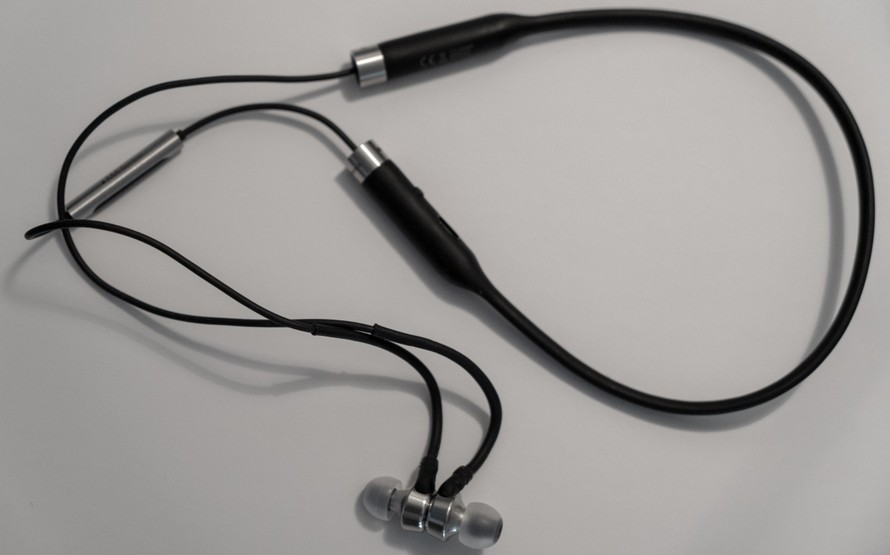
Figure 6: Bluetooth headset by RHA with necklace (incl. integrated battery) as carrying possibility
Theoretically, wireless transmission should be possible without loss of quality. After all, today wireless 4K video streaming is also possible, since narrow-band audio signals should not cause any problems.
In practice, however, I personally have had few positive experiences. Direct comparisons of (otherwise identical) In Ears with Bluetooth and cable always turned out clearly in favor of the wired model. The tonal dynamics of the models I know are strongly compressed via wireless connection. In addition, there are always radio interferences - especially in highly frequented places like train stations or shopping malls where the radio bands are jammed by many other people. In addition, very small batteries must be installed, which has a negative effect on the service life.
With very high audiphile requirements I would only recommend InEars with a jack connection at the moment. Some manufacturers, such as Shure, now offer InEars that allow you to switch between cable and Bluetooth module - and the InEars use standardized connectors. Exemplary!